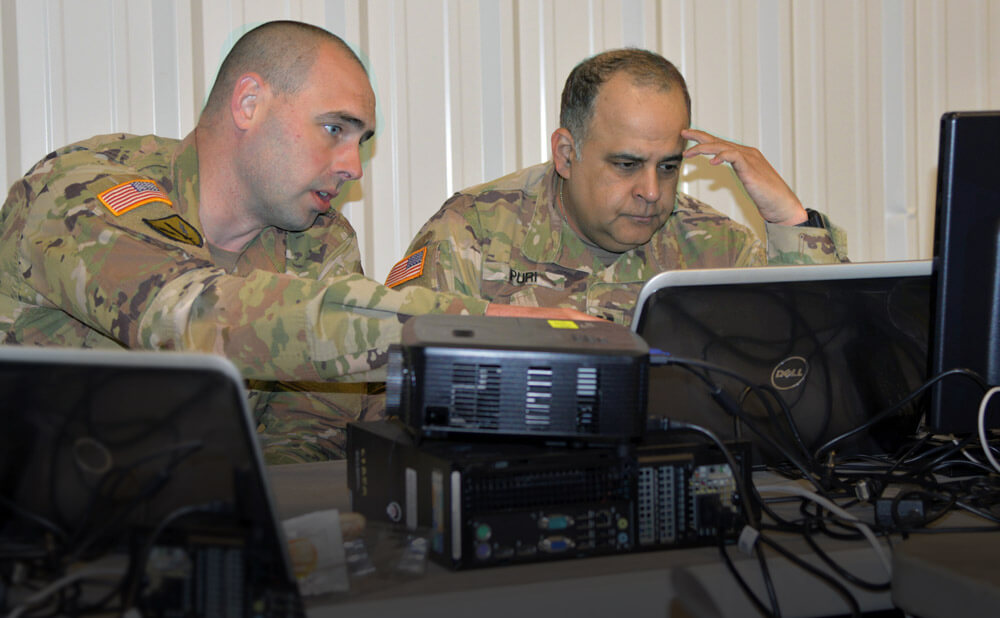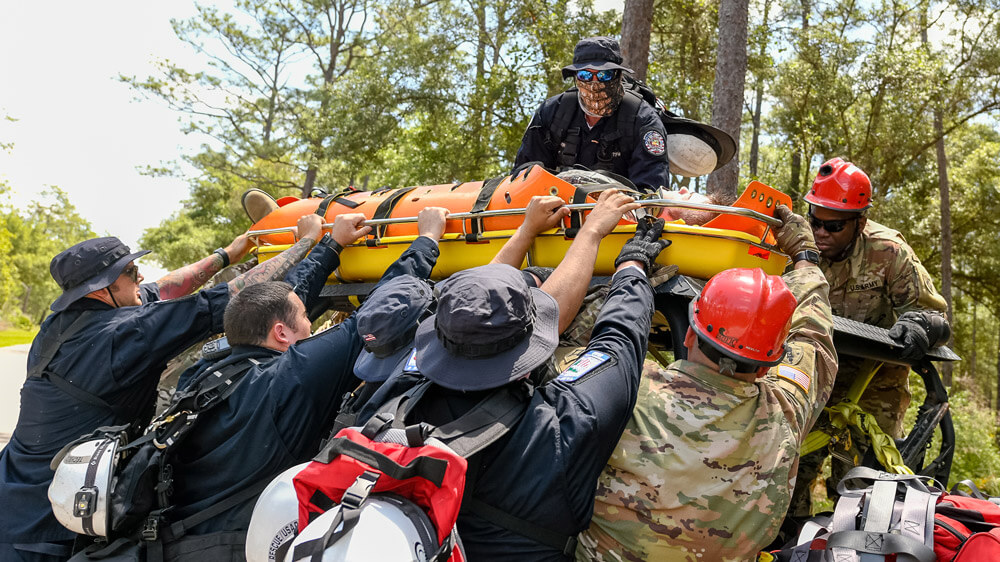Members of the Pennsylvania Helicopter Aquatic Rescue Team (PA-HART) saved a hunter with life-threatening injuries in Blair County, Pa., on Nov. 22, 2017.
First responders on the ground called for the team through the Pennsylvania Emergency Management Agency, according to LTC Michael Girvin, commander of 2nd Battalion (General Support), 104th Aviation Regiment. The responders needed to move the victim quickly, and the remote, heavily wooded terrain made the extraction difficult for wheeled vehicles.
It was the first in-state PA-HART rescue mission, LTC Girvin said, although the team has been training for this type of mission since 2006. The Pennsylvania National Guard has completed other military-only hoist rescues during domestic emergencies.
The unique capabilities of the team’s aircraft, a Pennsylvania National Guard UH-60 Black Hawk, was ideal for this scenario. Piloted by CW4 Keith Hogan and CW3 James Menoher, the UH-60 Black Hawk was configured with a medevac package, including a hoist.
“We launched from the Army Aviation Support Facility #2 in Johnstown, Pa., where the aircraft is located and [the] crew works,” CW4 Hogan said. “It took us about 20 minutes flying time until we reached the patient’s location. We started to hover above the tree line and sent [civilian rescue technicians] Scott Grahn and Ricky Price down on the hoist to assist the patient and first responders on the ground, while SSG Benjamin Turgeon operated the hoist.”
After the patient was loaded on the aircraft, the pilots and crew transported the hunter to a nearby field. There, the patient was moved to a civilian medevac aircraft and transported to a nearby hospital.
“The patient was relieved to see us, and we were happy to help,” CW4 Hogan said. “This is exactly what we train for, and we’re ready to be called upon for the next rescue mission.”
According to news reports, the hunter injured his leg when he fell from a tree.
The PA-HART is a joint partnership among the Pennsylvania Army National Guard, the Pennsylvania Fish and Boat Commission and the Pennsylvania Emergency Management Agency, along with credentialed civilian rescue technicians.
BY LTC Angela King-Sweigart, PENNSYLVANIA NATIONAL GUARD



